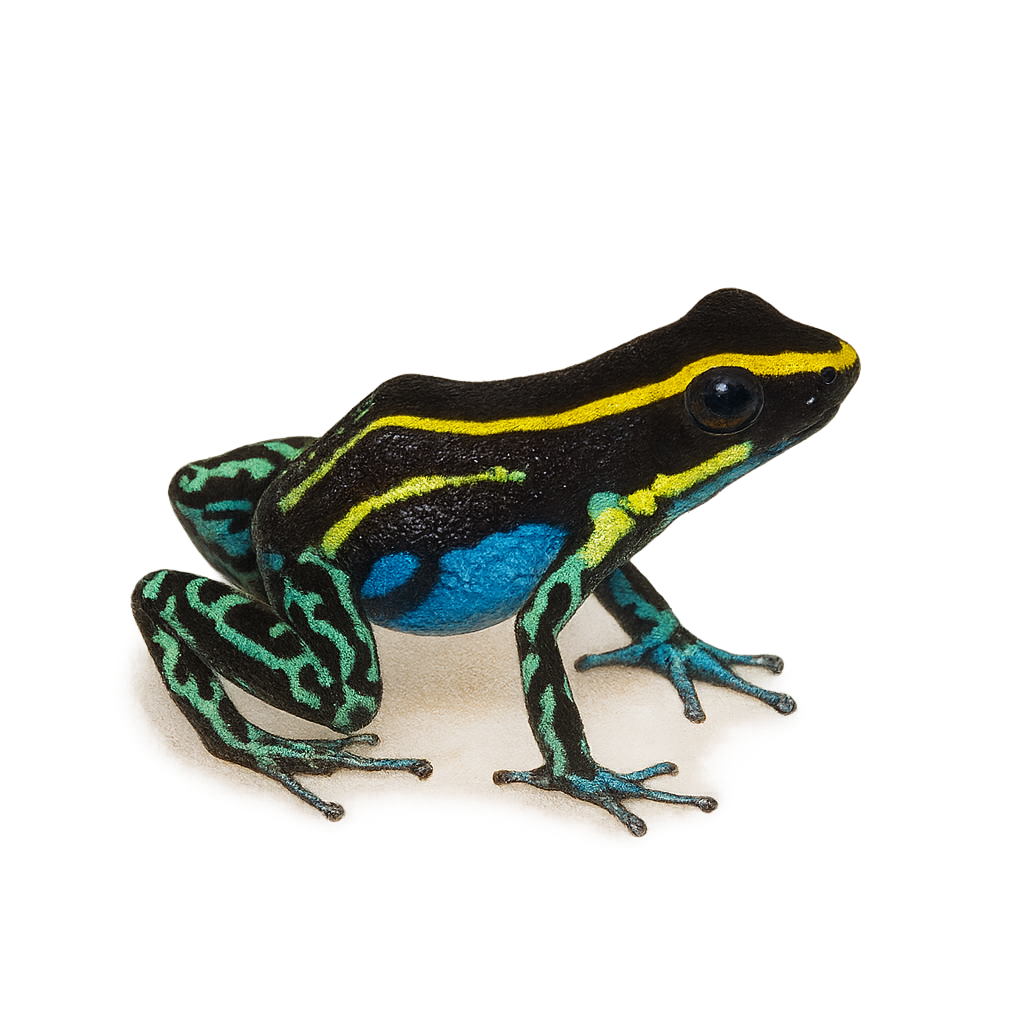Your wildlife photography guide.
Explore the sky-blue poison frog in detail, study its behavior, prepare your shots.
Where to observe and photograph the sky-blue poison frog in the wild
Learn where and when to spot the sky-blue poison frog in the wild, how to identify the species based on distinctive features, and what natural environments it inhabits. The WildlifePhotographer app offers tailored photography tips that reflect the sky-blue poison frog’s behavior, helping you capture better wildlife images. Explore the full species profile for key information including description, habitat, active periods, and approach techniques.
Sky‑blue poison frog
Scientific name: Hyloxalus azureiventris

IUCN Status: Near Threatened
Family: DENDROBATIDAE
Group: Amphibians
Sensitivity to human approach: Suspicious
Minimum approach distance: 3 m
Reproduction period: November to December
Incubation: 10–14 jours
Births: December to January
Habitat:
Humid tropical forests, streams, undergrowth
Activity period :
Primarily active during the day, with peak activity in the morning and late afternoon.
Identification and description:
The Sky‑blue poison frog, Hyloxalus azureiventris, is a small, brightly colored frog native to the humid tropical forests of Peru. It is characterized by its vivid coloration, with a brown back and a striking blue belly, allowing it to blend in with fallen leaves and streams. Measuring about 2 to 3 cm, it is primarily terrestrial and feeds on small insects. This species is known for its territorial behavior, with males actively defending their territory against intruders. The Blue-bellied Poison Frog plays a crucial role in the ecosystem by regulating insect populations and serving as prey for many predators.
Recommended lens:
Macro – adjust based on distance, desired framing (portrait or habitat), and approach conditions.
Photography tips:
To photograph the Sky‑blue poison frog, it is advisable to use a macro lens to capture the details of its colorful skin. Look for it near streams or in humid undergrowth where it is active during the day. Be patient and avoid sudden movements to prevent scaring it away. Use a tripod to stabilize your camera and adjust the lighting to highlight the frog's vivid colors. Natural morning or afternoon light is ideal for achieving sharp and well-exposed images.
The WildlifePhotographer App is coming soon!
Be the first to explore the best nature spots, track rutting seasons, log your observations, and observe more wildlife.
Already 1 439 wildlife lovers subscribed worldwide

